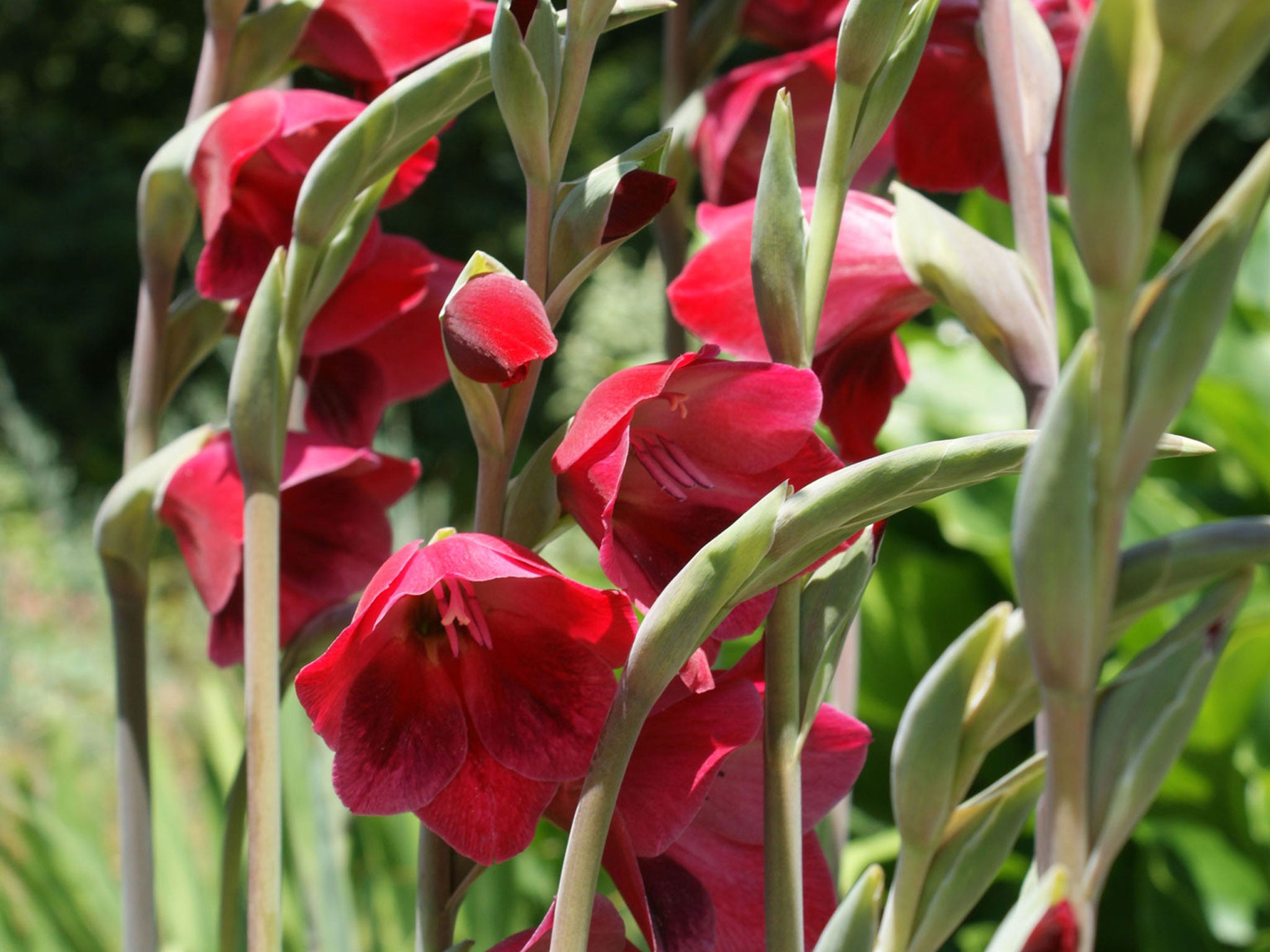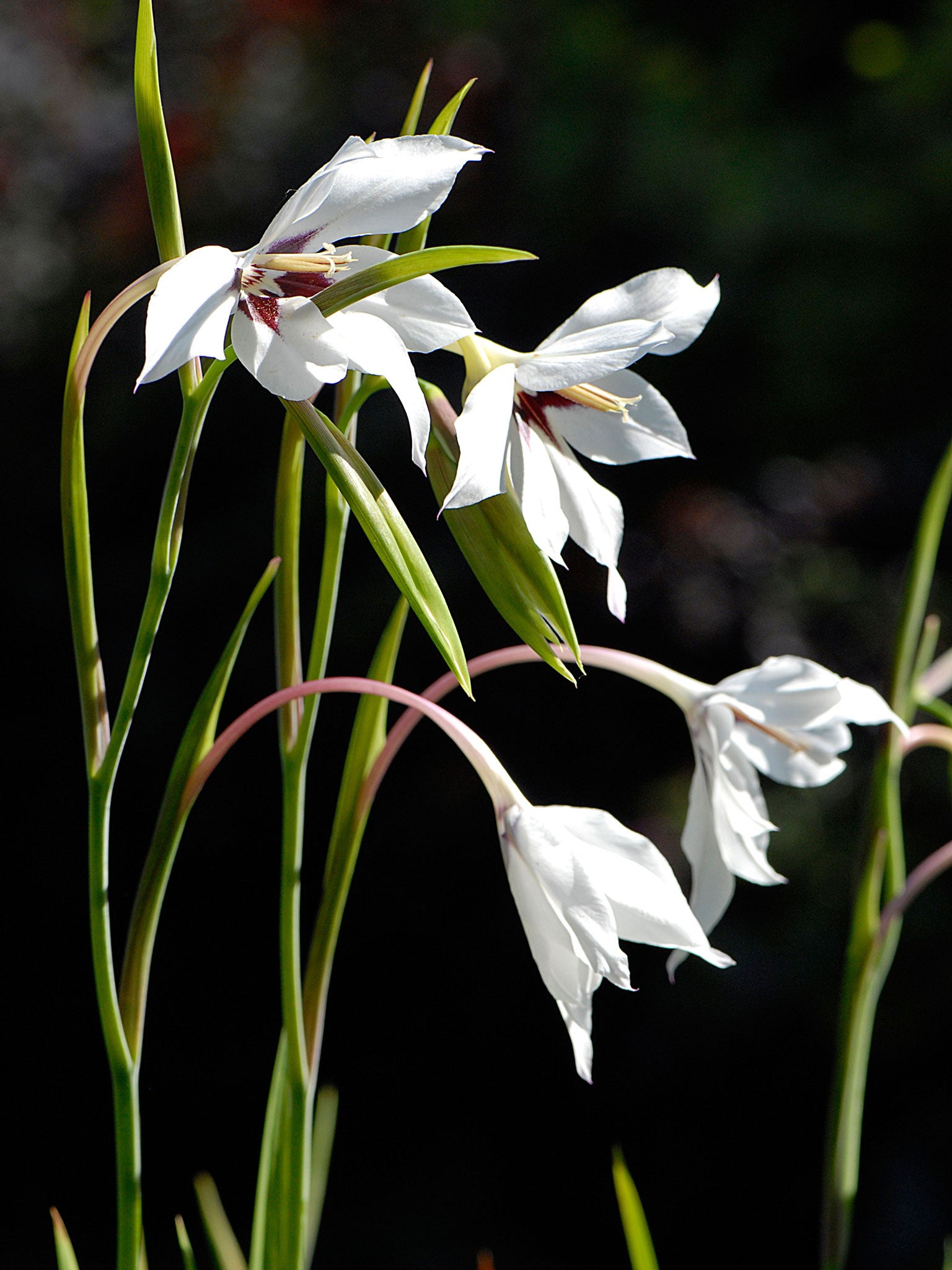Gladioli are among the best bulbs to plant now for flowers next June
Our gardening correspondent has been won over by gladiolus - not the monstrous showbench gladdys beloved of Edna Everage, but more garden-friendly types such as Gladiolus byzantinus

I've been planting spring. Which makes me sound like a megalomaniac. Of course, spring will happen whether I've been scuffling about with my trowel or not. But there is a particular sense of pleasure in setting bulbs in the ground now and imagining the show to come next year. If the badgers don't dig them up. If the squirrels don't scatter them while looking for the nuts they've buried. For heaven's sake! Why don't they make a map or something?
For a happy planting session you need ground that is dampish, so that the holes you dig don't crumble into dust as you dig. And you need a fairly narrow trowel with a comfortable handle (mine is made by the Dutch family firm Sneeboer, and is 16cm long but only 5cm wide). Although daffodils are best put in the ground in September, there is still time to plant a wide range of other bulbs. Leave tulip planting until November.
The great thing about bulbs is that they leap up, do their thing and then pack themselves away underground. They don't bore on, long after they have any reason to catch your attention. There are plenty enough plants like that. Roses, for instance. Bulbs are intoxicatingly transitory delights. In a mixed border, we can exploit that to our advantage, using them for a spring bonanza, before filling the places they have been with summer-flowering annuals such as cornflowers or larkspur, ammi or orlaya.
The safest thing, in mixed plantings, is to plant deep rather than shallow
Instinctively we think of the showiest subjects to use in beds and borders: hyacinths, tulips, crown imperials (Fritillaria imperialis), alliums, iris, galtonias, gladioli (especially the elegant Gladiolus murielae), zantedeschia, lilies. These nine between them will furnish a border for at least seven months from March until September.
The safest thing, in mixed plantings, is to plant deep rather than shallow and to mulch the beds thickly to suppress annual weeds and cut down on the amount you need to disturb the soil. On heavy soils, excavate a decent hole for each bulb, put a hummock of grit at the bottom of the hole, perch the bulb on the hummock and put more grit on top of it. Backfill the hole with earth mixed with a handful of bonemeal, and firm down gently.
This sounds a bore (and is one), but the grit improves drainage round the bulb and also goes a little way to deter the small, black underground slugs that inhabit heavy clay soils. They are very partial to tulip and lily bulbs. As well as suppressing weeds, the mulch will provide food for the bulb. The bonemeal will too, and slowly, which is what they need. I use a lot of bonemeal when I am planting bulbs, a handful in each hole.

Which are my favourites? Well, to my surprise, I've been won over by gladiolus, not the monstrous showbench gladdys beloved of Edna Everage, but more garden-friendly types such as Gladiolus byzantinus, which you can plant now to flower next June. It's about 60cm tall and performs like a herbaceous plant, self-supporting and strongly upright in growth. For a plant whose natural habitat is Spain, north-west Africa and Sicily, it is surprisingly good in grass. It can easily hold its own if you plant it out when in growth, rather than as a dry bulb. If you want to do this, start off the corms in pots first.
G. byzantinus is particularly pleasing in bud, when the flower head turns over in an elegant curve. On most gladioli, the flowers are produced on one side of the spike and all face the same way. This gladiolus has flowers that are less blinkered, facing sideways as well as to the front. There may be up to 20 on a spike.
You can use it as a prelude to phlox or contrast it with the brilliant lime green flowers of Euphorbia palustris. Try it with showy purple Allium cristophii or surround it with a cloud of gypsophila and Verbena bonariensis to take over later in the season. Being Mediterranean, it also sits well with companions such as rosemary and grey-leaved cistus. Beware the pale imitation, G. italicus. The colour is a wishy-washy pink, nowhere near as telling as the real thing. Set the corms 10-15cm deep and 10cm apart.
You'll have to wait until next spring to get hold of another stunning gladiolus, "Ruby", which comes into flower much later than G. byzantinus (G. communis subsp. byzantinus for the pedantic). Mine flowered this year from late August into September, rich gorgeous ruby red flowers, on stems about 90cm tall. It's fantastic. Alan Street of Avon Bulbs has raised some superb seedlings from it, which he brought to a meeting of the Royal Horticultural Society's Bulb Committee. Suddenly I was overcome with raw, naked acquisitiveness. Not a pretty sight. When would he have some for sale, I asked? But he's not saying. Wise man.
Join our commenting forum
Join thought-provoking conversations, follow other Independent readers and see their replies
Comments